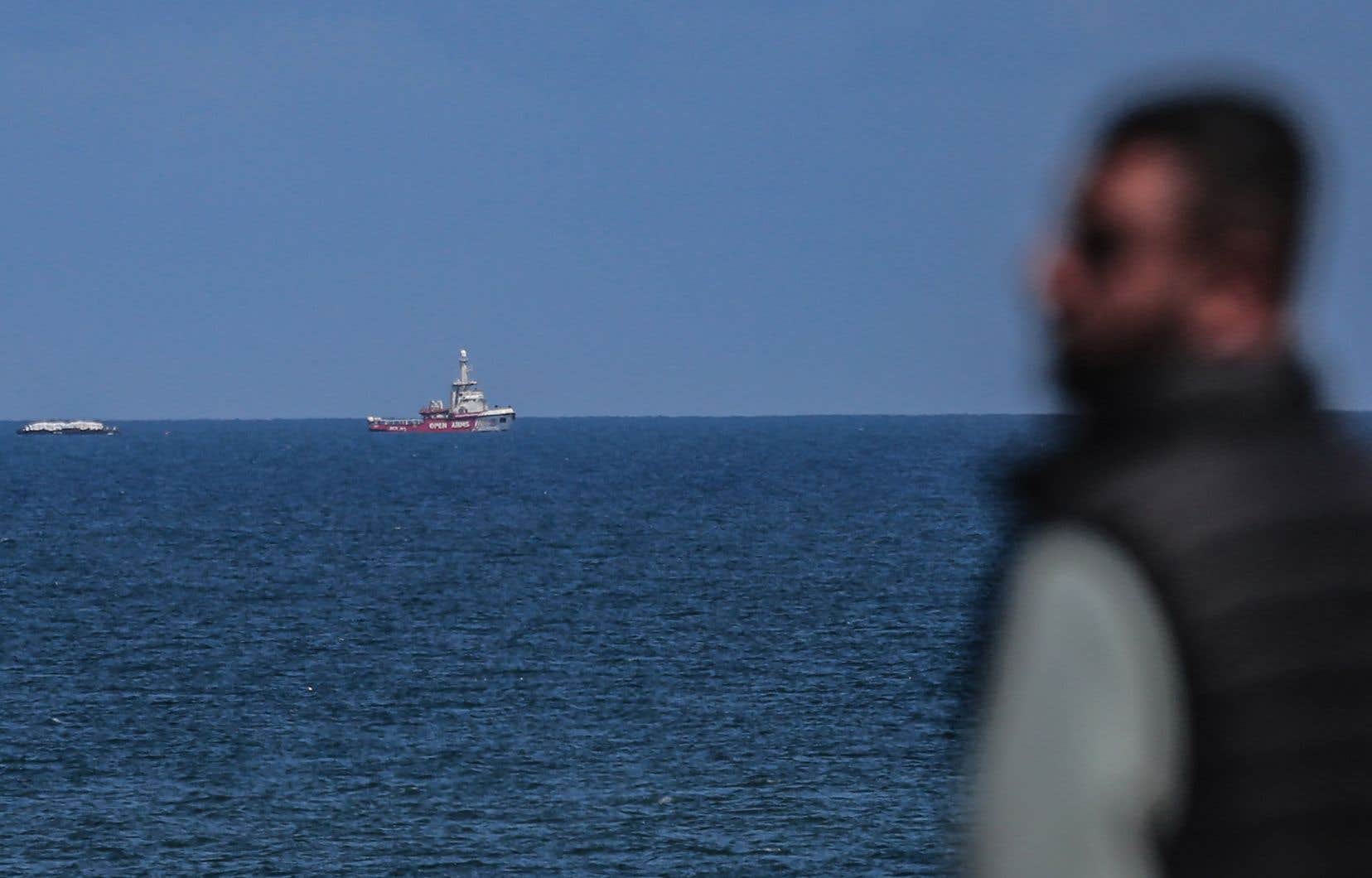A first Spanish boat loaded with food was heading towards the Gaza Strip on Thursday, at a time when efforts are accelerating to try to deliver more humanitarian aid to the Palestinian territory on the brink of famine, after more than five months of war between Israel and Hamas.
While the mediating countries failed to negotiate a truce agreement before the start of Ramadan on March 11, the UN fears widespread famine in the territory besieged by Israel, particularly in the north, which is difficult to access, where around 300 people live. 000 people.
Faced with the humanitarian emergency, several countries have decided to diversify the routes for delivering aid to the population, via airdrops or a maritime corridor from Cyprus.
In the north of the Gaza Strip, residents scan the sky daily waiting for an airdrop, but the quantities dropped are limited. As soon as the parachutes approach the ground, they rush into the middle of the ruins, hoping to recover a bag of food.
“Hungry and exhausted”
“Since the war started and people moved south, we haven’t received any help. We have been wandering since early in the morning in the hope that a plane will drop parachutes above us,” displaced person Mokhles al-Masry told AFP, with a bag of flour on his shoulders, in Beit Lahia.
But these packages, he adds, “do not cover 1% of needs. Everyone is scrambling violently to get a box for their children, to collect a can of tuna or beans. All the people are hungry and exhausted.”
In the south, in Rafah, AFP images on Thursday showed a crowd rushing to pick up a few bags of flour that had fallen from a truck bringing humanitarian aid from Egypt.
The Israeli bombardments which continue without respite have left 69 dead in 24 hours, the Hamas Ministry of Health announced Thursday.
The government of the Islamist movement counted more than 40 airstrikes on Rafah and the neighboring town of Khan Younes, as well as on the center and north of the territory.
The ministry also said that Israeli fire killed seven people during an aid distribution near Gaza City. Questioned by AFP, the army did not comment on this information.
The war was sparked on October 7 by an unprecedented attack carried out by Hamas commandos infiltrated from Gaza in southern Israel, which resulted in the deaths of at least 1,160 people, most of them civilians, according to a count of AFP established from official Israeli sources.
According to Israel, around 250 people were kidnapped that day and 130 of them are still hostages in Gaza, 32 of whom are believed to have died.
In retaliation, Israel promised to annihilate the Islamist movement, in power in Gaza since 2007, which it considers a terrorist organization along with the United States and the European Union.
Its army launched an offensive that has so far left 31,341 people dead in the Gaza Strip, mostly civilians, according to Hamas’s health ministry.
“A continuous flow of boats”
In addition to the airdrops, a humanitarian maritime corridor was opened from Cyprus, at the initiative of the European Union and the United Arab Emirates, with the departure on Tuesday for Gaza, approximately 370 kilometers away, of a first boat loaded with 200 tonnes of food provided by the American NGO World Central Kitchen.
This boat from the Spanish NGO Open Arms, which tows a barge, was heading Thursday in the Mediterranean off the Israeli coast and was approaching Gaza, according to the specialist site Marine Traffic.
A WCK team present in Gaza since the start of the war has built a floating jetty where cargo intended for the population of the north of the territory will be unloaded, in a location which has not been revealed for security reasons.
This pier should be ready “in a few hours,” WCK president Erin Gore told AFP in Dubai on Thursday. “We hope to unload the aid as soon as it is possible to dock, but many factors play into this complicated operation,” he added.
The shipment includes approximately 300,000 prepared meals. “We all know it’s not enough. “That’s why it’s not acceptable to send just one boat, and that’s why we need to open this corridor with a continuous flow of boats,” Erin Gore said.
Cyprus announced that a second, larger boat was ready to depart.
Four American army boats also left the United States with the equipment necessary to build a dock in Gaza to unload humanitarian aid.
But the UN, like several countries and NGOs, repeats that shipments by sea or airdrops cannot replace land transport.
“There is no viable alternative to land routes through Egypt and Jordan and Israel’s entry points into Gaza for large-scale aid deliveries,” the United States stressed, Cyprus, the United Arab Emirates, the EU and Qatar in a joint statement.
“Humanitarian Island”
Aid by land, very insufficient in the face of the immense needs of the territory’s 2.4 million inhabitants, mainly enters the Gaza Strip from Egypt via the Rafah border crossing, after having been inspected by Israel.
Israeli Prime Minister Benjamin Netanyahu reiterated on Thursday his objective of a ground offensive on Rafah, where, according to the UN, around one and a half million Palestinians are massed, trapped against the closed border with Egypt.
“We will enter Rafah,” he reaffirmed, despite repeated warnings from the international community, notably the United States.
The spokesperson for the Israeli army, Rear Admiral Daniel Hagari, spoke on Wednesday of the establishment of a “humanitarian island” where the inhabitants of Rafah would be moved before the offensive and where they would have “temporary accommodation , food, water and field hospitals.”
